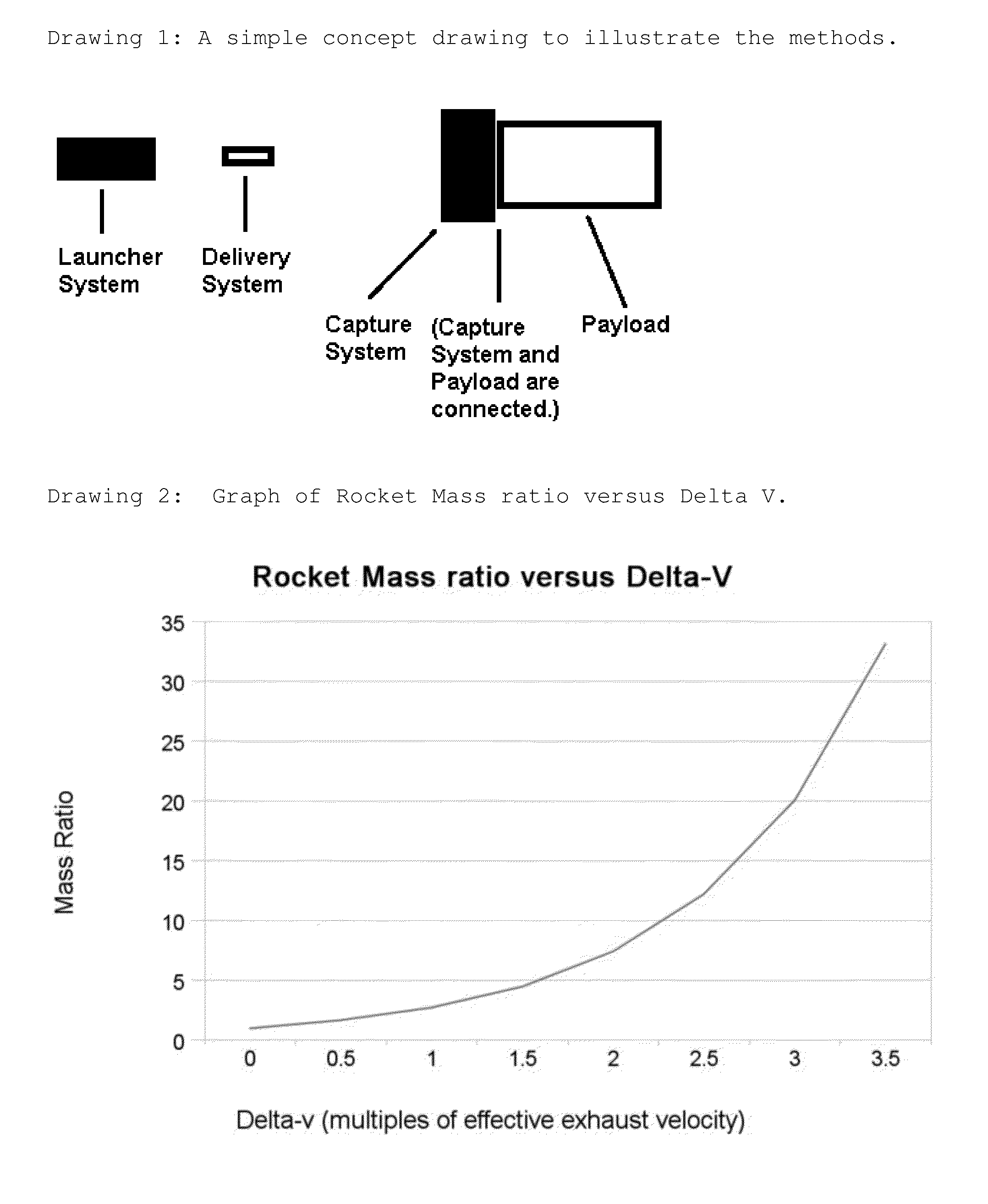Methods of Delivering Items in Space
a technology of space and items, applied in the direction of transportation and packaging, cosmonautic vehicles, aircrafts, etc., to achieve the effect of increasing delta v and more viable mass-based fuels
- Summary
- Abstract
- Description
- Claims
- Application Information
AI Technical Summary
Benefits of technology
Problems solved by technology
Method used
Image
Examples
first embodiment
[0061]In order to accomplish in-transit fueling, we need a system that can launch fuel in space to rendezvous with the payload that is using said fuel to accelerate. The choices of example technologies for this embodiment do not limit the scope of the method. The example mass of the primary embodiment were chosen to be close to that of a United States space shuttle, in order to better allow persons familiar with prior space propulsion systems to quickly grasp the utility of the method.
[0062]For near term initial implementation of a launcher to move fuel to a 100,000 kg payload within the solar system, the power source for the acceleration of cargo / fuel would almost certainly be solar, either some type of solar thermal energy generation based on mirrors, or photovoltaic. Nuclear energy generation might also work, but would require more complicated engineering for safety and heat dispersal. Undoubtedly there are other technologies which might also produce enough power for the launcher...
second embodiment
[0087]It would be very difficult to justify an initial implementation of this method at anything approaching the capacity described in the first embodiment above. There is no need for a hugely expensive new heavy lift system or new multibillion dollar support systems for a simpler test case. Ideally, the test case would need to be at least capable of defraying its own costs during development and study. There are a few different, plausible methods to do this, two obvious methods are discussed a bit later.
[0088]It would be relatively inexpensive to put a very small launcher system in space and use it to launch fuel or even equipment to small probes exploring the asteroid belt or other places in the solar system. Thoroughly surveying the asteroid belt with small probes would be ideal as a first step towards a real human space presence. We could learn what metals and other compounds are available and accessible, including water, which would help us decide where to put the first small l...
PUM
 Login to View More
Login to View More Abstract
Description
Claims
Application Information
 Login to View More
Login to View More - R&D
- Intellectual Property
- Life Sciences
- Materials
- Tech Scout
- Unparalleled Data Quality
- Higher Quality Content
- 60% Fewer Hallucinations
Browse by: Latest US Patents, China's latest patents, Technical Efficacy Thesaurus, Application Domain, Technology Topic, Popular Technical Reports.
© 2025 PatSnap. All rights reserved.Legal|Privacy policy|Modern Slavery Act Transparency Statement|Sitemap|About US| Contact US: help@patsnap.com


